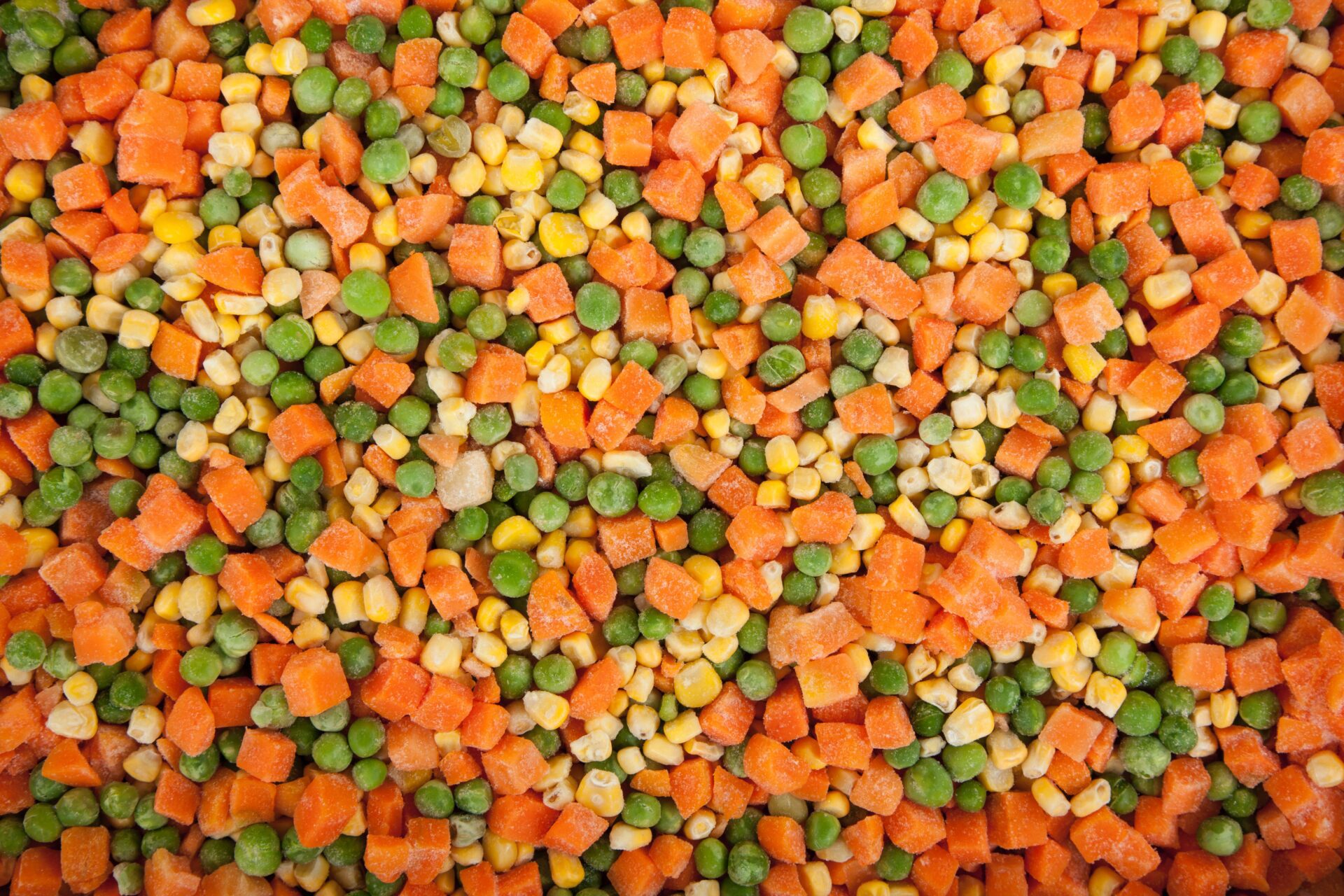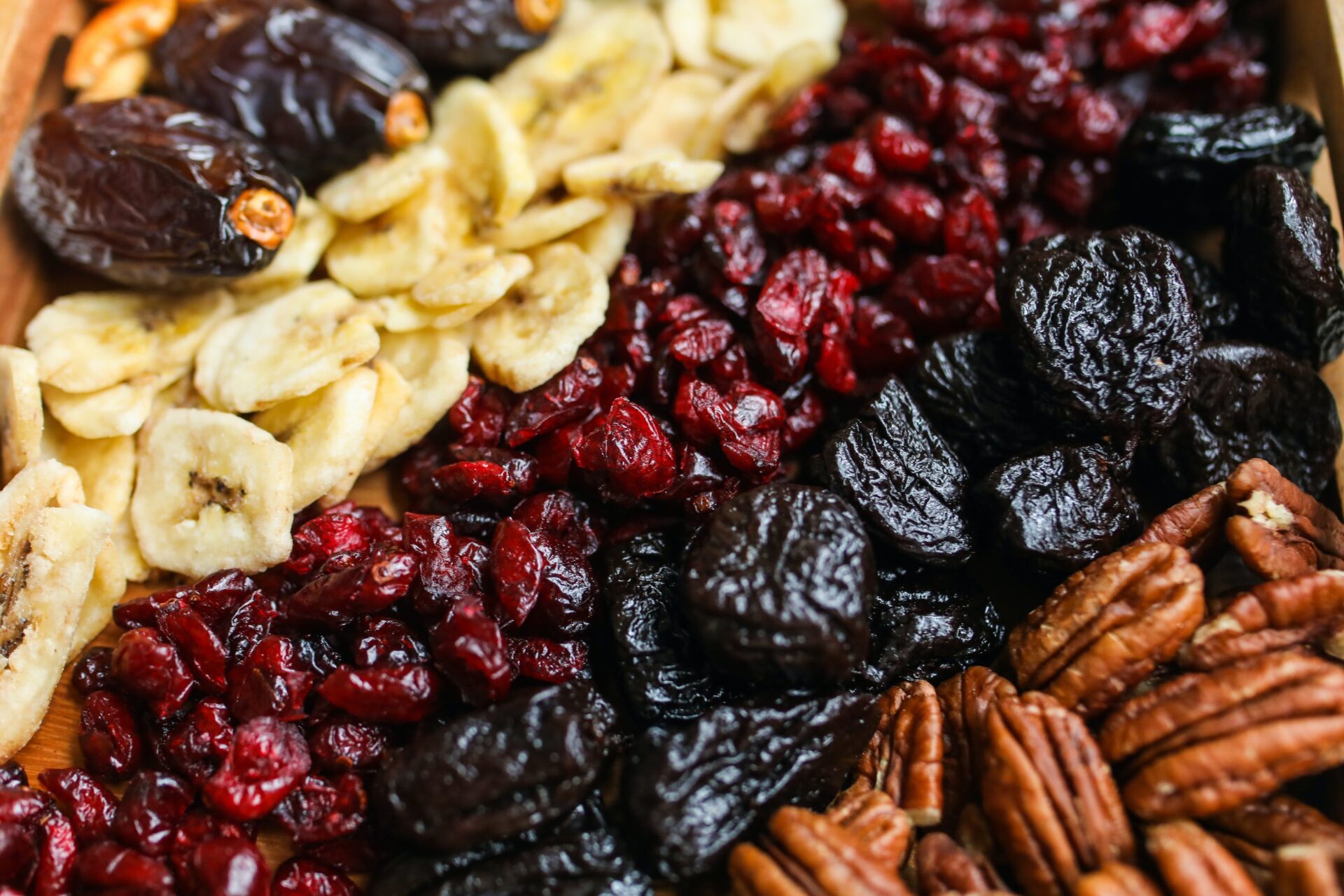As parents, we strive to provide our kids with nutritious meals and snacks, which often means trying to incorporate fruits and vegetables as much as we can. But fresh isn’t always an option, and sometimes all you can get them to eat is dried or canned. So what’s really the difference between fresh, frozen, dried, and canned fruits and veggies, and is one better than the others? We love a good pro/con list, so here it goes when it comes to these different forms of fruits and vegetables:
Fresh Foods
Fresh foods are what most of us think of when we picture eating healthy. These items are the least processed, which helps maintain their nutrients. They’re great when you can find them, but there are some important things to consider.
Pros of Fresh Foods
- Nutrient-rich: Fresh foods are at their peak of nutrition and flavor when they are in season.
- Variety: You can enjoy a wide range of fresh produce based on seasonal availability.
- No extra ingredients: Because you’re buying straight up strawberries or broccoli, you know that no additional ingredients like sugar, salt, or saturated fat have been added.
Cons of Fresh Foods
- Short shelf life: Fresh foods spoil quickly and often need to be used within days of purchasing.
- Seasonal limitations: Some of your favorite fresh foods may not be available year-round.
- Price: Fresh fruits and veggies tend to be the most expensive form.
- Prep: Sometimes more prep is required with fresh foods.

Frozen Foods
Frozen foods are typically picked at their peak freshness and then frozen to lock in nutrients and flavor. Offering a middle ground between freshness and convenience that extends the shelf life of foods, allowing your kiddos to enjoy a wide variety of options year-round.
Pros of Frozen Foods
- Nutrient retention: Frozen foods retain a significant portion of their nutrients.
- Convenient: Extending shelf life, year-round availability, and pre-cut and/or pre-packaged frozen fruits and veggies can save prep time.
- Price: Frozen foods are often less expensive than the fresh variety.
Cons of Frozen Foods
- Texture changes: Some fruits and vegetables may have an altered texture once defrosted.
- Fewer options: Not all foods are available frozen, limiting your choices.

Dried Foods
Dried foods are a time-tested method of preservation. By removing its water content, it becomes less susceptible to spoilage.
Pros of Dried Foods
- Nutrient retention: Dried foods maintain their nutrients, but they do lose their water content.
- Long shelf life: Unlike some of its counterparts, dried foods like beans and lentils can last for months or even years when stored properly.
Cons of Dried Foods
- Added sugar: Store-bought dried fruits may have added sugar, so be sure to check the Nutrition Facts label and try to find options without added sugar.
- Rehydration required: Some dried foods need to be rehydrated before use, which takes time that can be hard to come by.
- Price and portions: Dried foods can be more expensive, but it’s also good to keep portions in mind. It can be easy to eat way more of a dried form of a fruit than it would be if you were eating it fresh, which also means eating more sugar than you might otherwise.

Canned Foods
Canned foods have been a pantry staple for generations. Canning requires sealing foods in an airtight container using heat to kill bacteria and enzymes that can cause spoilage. When it comes to nutrient-retention, canned foods are a little mixed. Most nutrients are preserved, but some vitamin content can be reduced in the processing, however some antioxidant content can increase.
Pros of Canned Foods
- Long shelf life: Ready-to-eat with many of its nutrients preserved, canned foods can last for years.
- Convenient: With an extended shelf life and year-round availability of your favorites, canned foods are easy to prepare time savers.
- Price: Canned foods are often less expensive than the fresh variety.
Cons of Canned Foods
- Added sugar and salt: Some canned foods contain added sugar and/or sodium. So, when purchasing canned fruit, pick varieties that are canned in water, 100% juice, or in its own juices to try to avoid added sugar. Choose canned vegetables without added salt. You can find added sugar and sodium content right on the Nutrition Facts label to see how much is in the product.
- Texture and flavor: Some canned foods may also have a different texture or taste compared to fresh or frozen.
So, which is better?
Fruits and vegetables in any of the forms above are key for helping your family get the nutrients they need. Our suggestion? Try a variety of options to see what your family prefers. Aim for in-season if you’re going with fresh, and keep frozen, dried, and canned options (without the added sugar or salt) on hand so you can make sure fruits and veggies are part of every meal.
Sources:
- U.S. Department of Agriculture I My Plate. Fruits
- New York Times. 10 Nutrition Myths Experts Wish Would Die
- The Washington Post. Dried fruit can be just as healthy for you as the fresh variety
- Academy of Nutrition and Dietetics. Fresh, Canned or Frozen: Get the Most from Your Fruits and Vegetables
- Academy of Nutrition and Dietetics. Are Canned Foods Nutritious For My Family?

